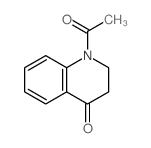1555-66-4
| 中文名 | N,N-二氰乙基苯胺 |
|---|---|
| 英文名 | 3-[N-(2-cyanoethyl)anilino]propanenitrile |
| 英文别名 |
3,3'-Phenylimino-di-propionitril
EINECS 216-306-4 N,N-Bis(2-cyanoethyl)aniline bis-2-cyanoethyl aniline MFCD00019855 3,3'-(Phenylimino)dipropionitrile |
| 密度 | 1.105g/cm3 |
|---|---|
| 沸点 | 175 - 180 (0.3 torr) |
| 熔点 | 81-84 °C(lit.) |
| 分子式 | C12H13N3 |
| 分子量 | 199.25200 |
| 闪点 | 189ºC |
| 精确质量 | 199.11100 |
| PSA | 50.82000 |
| LogP | 2.32036 |
| 外观性状 | 固体 |
| 蒸汽压 | 5.35E-07mmHg at 25°C |
| 折射率 | 1.567 |
| 储存条件 | 保持贮藏器密封、储存在阴凉、干燥的地方,确保工作间有良好的通风或排气装置 |
| 稳定性 | 如果遵照规格使用和储存则不会分解,未有已知危险反应,避免氧化物 |
| 分子结构 | 1、 摩尔折射率:58.92 2、 摩尔体积(m3/mol):180.2 3、 等张比容(90.2K):485.0 4、 表面张力(dyne/cm):52.4 5、 介电常数:无可用 6、 偶极距(10 -24cm 3):无可用 7、 极化率:23.35 |
| 计算化学 | 1.疏水参数计算参考值(XlogP):1.4 2.氢键供体数量:0 3.氢键受体数量:3 4.可旋转化学键数量:5 5.互变异构体数量:无 6.拓扑分子极性表面积50.8 7.重原子数量:15 8.表面电荷:0 9.复杂度:241 10.同位素原子数量:0 11.确定原子立构中心数量:0 12.不确定原子立构中心数量:0 13.确定化学键立构中心数量:0 14.不确定化学键立构中心数量:0 15.共价键单元数量:1 |
| 更多 | 1. 性状:白色结晶粉末。 2. 密度(g/mL,25/4℃): 未确定 3. 相对蒸汽密度(g/mL,空气=1):未确定 4. 熔点(ºC):81-84 5. 沸点(ºC,常压):175-180 6. 沸点(ºC,5.2kPa): 未确定 7. 折射率: 未确定 8. 闪点(ºC): 未确定 9. 比旋光度(º): 未确定 10. 自燃点或引燃温度(ºC): 未确定 11. 蒸气压(kPa,25ºC): 未确定 12. 饱和蒸气压(kPa,60ºC): 未确定 13. 燃烧热(KJ/mol):未确定 14. 临界温度(ºC): 未确定 15. 临界压力(KPa): 未确定 16. 油水(辛醇/水)分配系数的对数值: 未确定 17. 爆炸上限(%,V/V):未确定 18. 爆炸下限(%,V/V): 未确定 19. 溶解性:易溶于有机溶剂、稀酸、稀碱,不溶于水。 |
Synonym: Section 2 - COMPOSITION, INFORMATION ON INGREDIENTS
Risk Phrases: 20/21/22 40 50 48/23/24/25 Section 3 - HAZARDS IDENTIFICATION EMERGENCY OVERVIEW
Harmful by inhalation, in contact with skin and if swallowed. Limited evidence of a carcinogenic effect. Very toxic to aquatic organisms. Toxic : danger of serious damage to health by prolonged exposure through inhalation, contact with skin and if swallowed. Potential Health Effects Eye: May cause eye irritation. Skin: May cause skin irritation. Harmful if absorbed through the skin. Ingestion: Harmful if swallowed. May cause irritation of the digestive tract. Inhalation: Harmful if inhaled. May cause respiratory tract irritation. Chronic: Not available. Section 4 - FIRST AID MEASURES Eyes: Flush eyes with plenty of water for at least 15 minutes, occasionally lifting the upper and lower eyelids. Get medical aid. Skin: Get medical aid. Flush skin with plenty of water for at least 15 minutes while removing contaminated clothing and shoes. Ingestion: Get medical aid. Wash mouth out with water. Inhalation: Remove from exposure and move to fresh air immediately. If not breathing, give artificial respiration. If breathing is difficult, give oxygen. Get medical aid. Notes to Physician: Section 5 - FIRE FIGHTING MEASURES General Information: As in any fire, wear a self-contained breathing apparatus in pressure-demand, MSHA/NIOSH (approved or equivalent), and full protective gear. Extinguishing Media: Use foam, dry chemical, or carbon dioxide. Section 6 - ACCIDENTAL RELEASE MEASURES General Information: Use proper personal protective equipment as indicated in Section 8. Spills/Leaks: Vacuum or sweep up material and place into a suitable disposal container. Section 7 - HANDLING and STORAGE Handling: Avoid breathing dust, vapor, mist, or gas. Avoid contact with skin and eyes. Use only in a chemical fume hood. Storage: Store in a cool, dry place. Store in a tightly closed container. Section 8 - EXPOSURE CONTROLS, PERSONAL PROTECTION Engineering Controls: Use adequate ventilation to keep airborne concentrations low. Exposure Limits CAS# 1555-66-4: Personal Protective Equipment Eyes: Not available. Skin: Wear appropriate protective gloves to prevent skin exposure. Clothing: Wear appropriate protective clothing to prevent skin exposure. Respirators: Follow the OSHA respirator regulations found in 29 CFR 1910.134 or European Standard EN 149. Use a NIOSH/MSHA or European Standard EN 149 approved respirator if exposure limits are exceeded or if irritation or other symptoms are experienced. Section 9 - PHYSICAL AND CHEMICAL PROPERTIES Physical State: Powder Color: light beige Odor: Not available. pH: Not available. Vapor Pressure: Not available. Viscosity: Not available. Boiling Point: Not available. Freezing/Melting Point: 80 - 88 deg C Autoignition Temperature: Not available. Flash Point: Not available. Explosion Limits, lower: Not available. Explosion Limits, upper: Not available. Decomposition Temperature: Solubility in water: Specific Gravity/Density: Molecular Formula: C12H13N3 Molecular Weight: 199.25 Section 10 - STABILITY AND REACTIVITY Chemical Stability: Not available. Conditions to Avoid: Incompatible materials. Incompatibilities with Other Materials: Strong oxidizing agents, acids, acetic anhydride, acid chlorides, carbon dioxide. Hazardous Decomposition Products: Nitrogen oxides, carbon monoxide, carbon dioxide. Hazardous Polymerization: Has not been reported Section 11 - TOXICOLOGICAL INFORMATION RTECS#: CAS# 1555-66-4 unlisted. LD50/LC50: Not available. Carcinogenicity: N,N-Bis(cyanoethyl)aniline - Not listed by ACGIH, IARC, or NTP. Section 12 - ECOLOGICAL INFORMATION Section 13 - DISPOSAL CONSIDERATIONS Dispose of in a manner consistent with federal, state, and local regulations. Section 14 - TRANSPORT INFORMATION IATA Shipping Name: TOXIC SOLID, ORGANIC, N.O.S.* Hazard Class: 6.1 UN Number: 2811 Packing Group: 3 IMO Shipping Name: TOXIC SOLID, ORGANIC, N.O.S. Hazard Class: 6.1 UN Number: 2811 Packing Group: 3 RID/ADR Shipping Name: TOXIC SOLID, ORGANIC, N.O.S. Hazard Class: 6.1 UN Number: 2811 Packing group: III Section 15 - REGULATORY INFORMATION European/International Regulations European Labeling in Accordance with EC Directives Hazard Symbols: T N Risk Phrases: R 20/21/22 Harmful by inhalation, in contact with skin and if swallowed. R 40 Limited evidence of a carcinogenic effect. R 48/23/24/25 Toxic : danger of serious damage to health by prolonged exposure through inhalation, contact with skin and if swallowed. R 50 Very toxic to aquatic organisms. Safety Phrases: S 28A After contact with skin, wash immediately with plenty of water. S 36/37 Wear suitable protective clothing and gloves. S 45 In case of accident or if you feel unwell, seek medical advice immediately (show the label where possible). S 61 Avoid release to the environment. Refer to special instructions/safety data sheets. WGK (Water Danger/Protection) CAS# 1555-66-4: No information available. Canada CAS# 1555-66-4 is listed on Canada's NDSL List. CAS# 1555-66-4 is not listed on Canada's Ingredient Disclosure List. US FEDERAL TSCA CAS# 1555-66-4 is listed on the TSCA inventory. SECTION 16 - ADDITIONAL INFORMATION N/A |
|
生态学数据: 对是水稍微有危害的不要让未稀释或大量的产品接触地下水、水道或者污水系统,若无政府许可,勿将材料排入周围环境。
|
| 危害码 (欧洲) | Xi:Irritant; |
|---|---|
| 风险声明 (欧洲) | R36/37/38 |
| 安全声明 (欧洲) | S26-S36 |
| WGK德国 | 3 |
|
~% 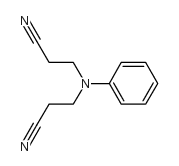
1555-66-4 |
| 文献:Journal of the American Chemical Society, , vol. 74, p. 1096 |
|
~% 
1555-66-4 |
| 文献:Journal of the Chemical Society, , p. 67,71 |
|
~% 
1555-66-4 |
| 文献:Journal of the Chemical Society, , p. 1536,1542 |
|
~% 
1555-66-4 |
| 文献:Journal of the Chemical Society, , p. 1536,1542 |
|
~% 
1555-66-4
详细
|
| 文献:Journal of the Chemical Society, , p. 67,71 |
| 上游产品 5 | |
|---|---|
| 下游产品 3 | |




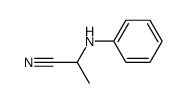
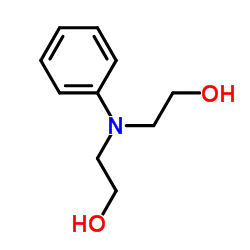

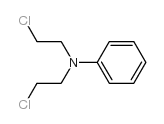

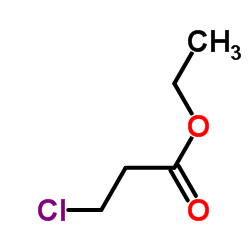
![Propanenitrile,3,3'-[(4-formylphenyl)imino]bis-结构式](https://image.chemsrc.com/caspic/427/17354-79-9.png)
